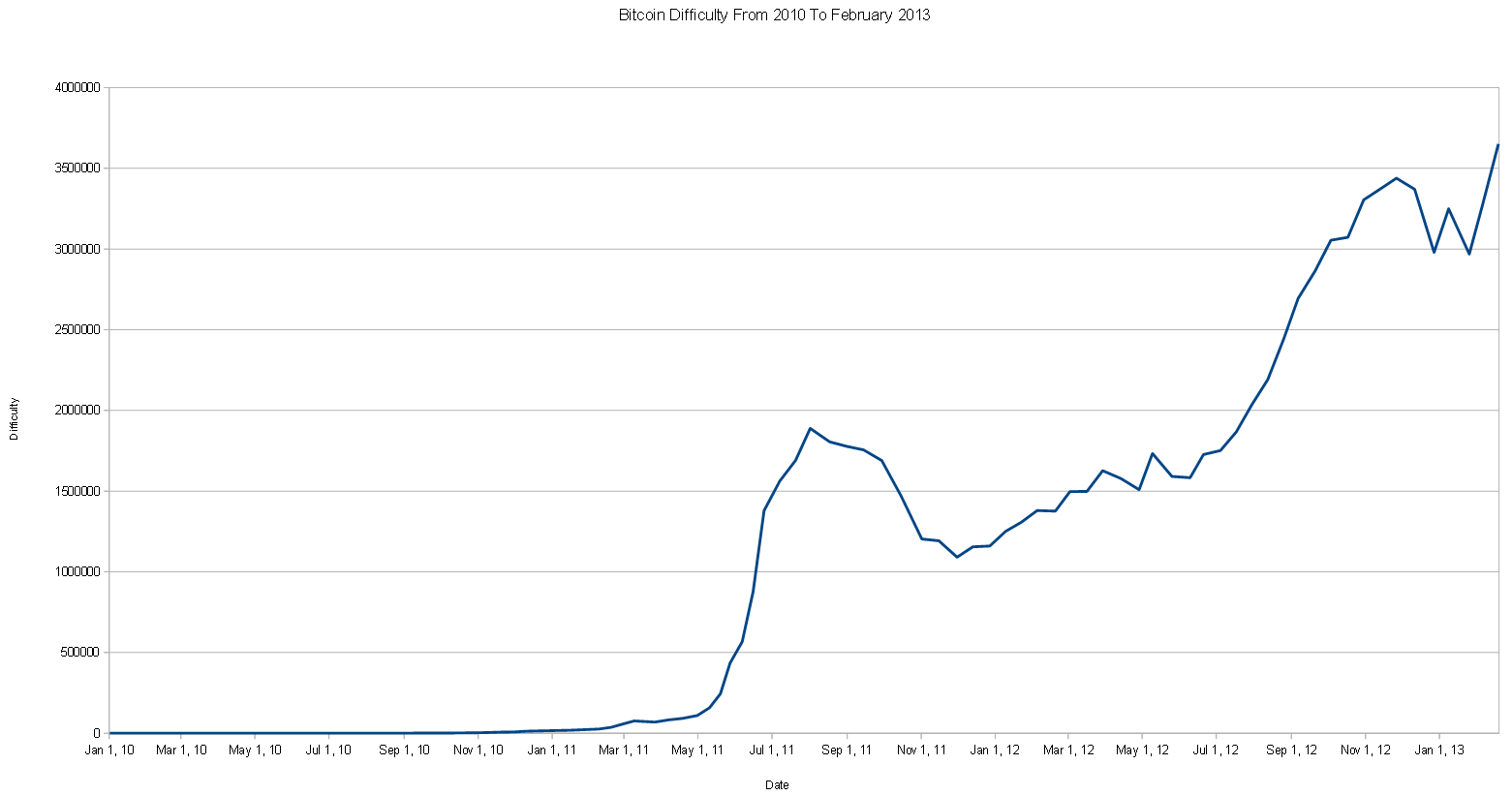Bitcoin mining difficulty asic

Depending on how many people were mining — and their combined hash power — and the time it took to find those 2, blocks. The difficulty will go up or down. As the difficulty increases, miners need more powerful hardware to accommodate for this change. When Bitcoin was newly released, you could mine coins a day using just your CPU, unfortunately, today it is impossible to mine a single Bitcoin with your CPU.
This being because the difficulty increases every two weeks, so you'd never actually manage to mine enough Bitcoin to receive a payout, nevermind a full coin. On the technical side, CPU's are slow at mining because confirming blockchain transactions on the Bitcoin blockchain is highly arithmetically intense.
Thus making them a lot slow at solving arithmetic issues. GPU's were mainly designed for texture mapping, and are hugely popular thanks to the graphics demand of modern video games. But thanks to the way they process data, they are markedly brilliant at executing hashing algorithms, and as such a huge spike has occurred in the demand for mid to high-range Graphics cards.
The main advantage for miners being that people do not wish to invest millions into a mining setup that will become worthless overnight. As the name would suggest, it is a hardware device that is specifically designed to mine cryptocurrency. As the difficulty has increased, the need for specifically designed mining hardware has arisen, but the usage of these ASIC devices has increased the need for more hashing power further. This is how they are able to have such a high hash rate comparable to other hardware solutions on the market.
Given the serious hashing power of ASICs, one might ask; why doesn't everyone serious about mining cryptocurrency use them? Well, to put it simply, ASICs are borderline industrial equipment. First of all, there is a global block difficulty, which forces valid blocks to have a hash below this target. Second, there is the factor of how many people are actively mining on the network alongside oneself. In the world of bitcoin, the mining difficulty automatically adjusts every 2, blocks on the network.
Depending on how many people were mining — and their combined hash power — and the time it took to find those 2, blocks. The difficulty will go up or down. As the difficulty increases, miners need more powerful hardware to accommodate for this change.
When Bitcoin was newly released, you could mine coins a day using just your CPU, unfortunately, today it is impossible to mine a single Bitcoin with your CPU. This being because the difficulty increases every two weeks, so you'd never actually manage to mine enough Bitcoin to receive a payout, nevermind a full coin.
On the technical side, CPU's are slow at mining because confirming blockchain transactions on the Bitcoin blockchain is highly arithmetically intense. Thus making them a lot slow at solving arithmetic issues.
GPU's were mainly designed for texture mapping, and are hugely popular thanks to the graphics demand of modern video games. But thanks to the way they process data, they are markedly brilliant at executing hashing algorithms, and as such a huge spike has occurred in the demand for mid to high-range Graphics cards.
The main advantage for miners being that people do not wish to invest millions into a mining setup that will become worthless overnight. As the name would suggest, it is a hardware device that is specifically designed to mine cryptocurrency. As the difficulty has increased, the need for specifically designed mining hardware has arisen, but the usage of these ASIC devices has increased the need for more hashing power further.